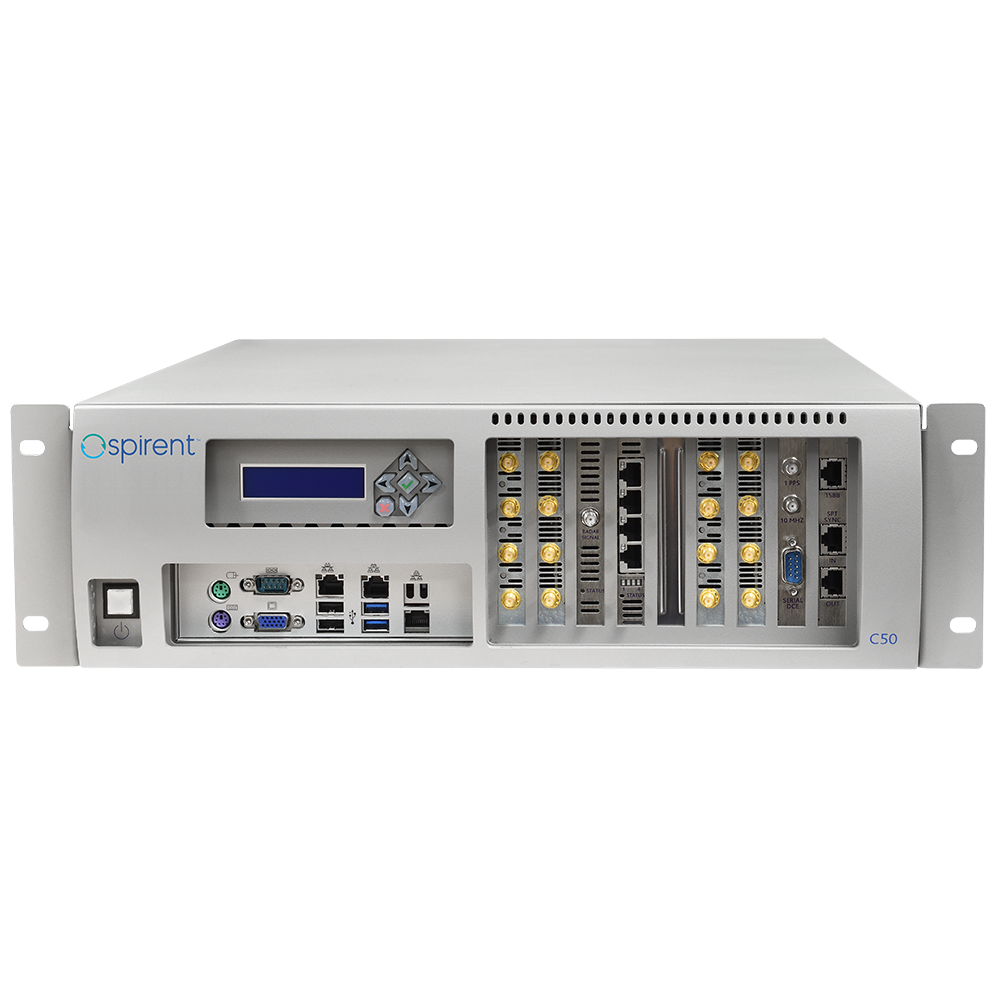IEEE 802.11ax on 6GHz spectrum or Wi-Fi 6E comes alongside the latest 802.11ax standard and means devices can now operate on 6GHz band in addition to the existing 2.4GHz and 5GHz. Spirent TestCenter Wi-Fi 6E appliance supports the highest performing and most realistic wireless local area network (WLAN) multi- client emulation for direct functionality and performance testing of Access Points (APs) and end-to-end testing of WLAN ecosystems that include WLAN access controllers, and gateways. Spirent TestCenter C50 Wi-Fi 6E Appliance in a compact 3U appliance form factor combines Spirent’s industry- leading IEEE 802.11ax WLAN tri-band 2.4GHz/5GHz/6GHz interface cards with Spirent IEEE 802.3bz BASE-T 100Mbps/1Gbps/2.5Gbps/5Gbps/10Gbps Ethernet card on a copper interface.
Users can emulate a large number of realistic 802.11 a/b/g/n/ac/ax WLAN clients to connect with an AP via a cabled conductive or over-the-air (OTA) link. Basic WLAN control plane and data plane features along with the advanced RFC style network traffic and throughput performance test cases are supported over the WLAN network involving the emulated clients and the APs under test. The C50 Appliance also provides complete Dynamic Frequency Selection (DFS) testing coverage through the integration of a radar signal emulation tool.
The Wi-Fi 6E interfaces installed in the highly integrated C50 Appliance consist of multiple IEEE 802.11ax tri-band radios, providing maximum user configurability and flexibility to emulate various IEEE 802.11ax clients on 2.4GHz, 5GHz, and 6GHz band and other legacy 802.11 a/b/g/n/ac clients on either 2.4GHz or 5GHz band. The newly designed 802.11ax Wi-Fi 6E radio interface supports the latest 802.11ax standard. A single WLAN radio supports 802.11ax clients with different spatial stream configurations up to 4 spatial streams for the best realistic client emulation scenarios in either conductive or OTA mode.
Designed for testing WLAN network infrastructure devices, the intended DUTs include the latest 802.11ax carrier or enterprise thin APs with controllers, consumer grade 802.11ax APs, and integrated broadband WLAN gateway with 802.11ax support. Spirent TestCenter WLAN solutions offer the best- in-class traffic generation and analysis for testing functionality, performance, and scalability.
A dedicated radio interface is included to generate certain radar signals required by the regulators such as FCC, ETSI, Japan-MIC, Korea, and China Telecom, etc. on 5GHz DFS band that is unlicensed but shared with many applications including weather radars and WLAN. With this tester, users can easily validate the compliance of 802.11 APs to the latest regulatory mandated DFS requirements on 5GHz band. Both manual and automated test cases provided, covering regulators requirements with multi-trial testing, detection probability testing, and detection bandwidth testing. The statistical results reported for those test cases include critical DFS timing characteristics that an AP under test can support.

